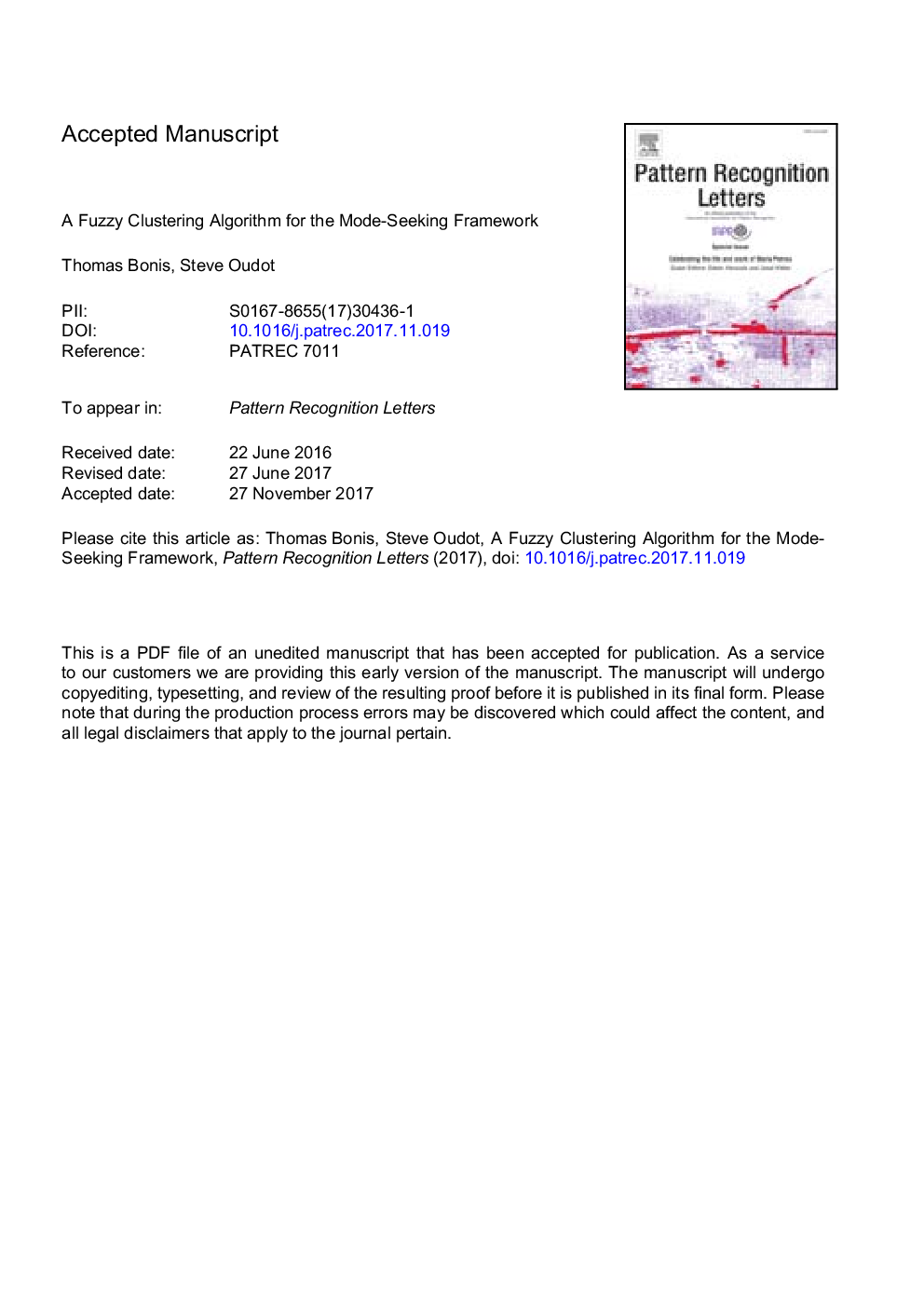| Article ID | Journal | Published Year | Pages | File Type |
|---|---|---|---|---|
| 6940695 | Pattern Recognition Letters | 2018 | 10 Pages |
Abstract
In this paper, we propose a new fuzzy clustering algorithm for the mode-seeking framework. Given a dataset in Rd, we define regions of high density that we call cluster cores. We then consider a random walk on a neighborhood graph built on top of our data points which is designed to be attracted by high density regions. The strength of this attraction is controlled by a temperature parameter βâ¯>â¯0. The membership of a point to a given cluster is then the probability for the random walk to hit the corresponding cluster core before any other. While many properties of random walks (such as hitting times, commute distances, etc.) have been shown to eventually encode purely local information when the number of data points grows, we show that the regularization introduced by the use of cluster cores solves this issue. Empirically, we show how the choice of β influences the behavior of our algorithm: for small values of β the result is close to hard mode-seeking whereas when β is close to 1 the result is similar to the output of a (fuzzy) spectral clustering.
Related Topics
Physical Sciences and Engineering
Computer Science
Computer Vision and Pattern Recognition
Authors
Thomas Bonis, Steve Oudot,
